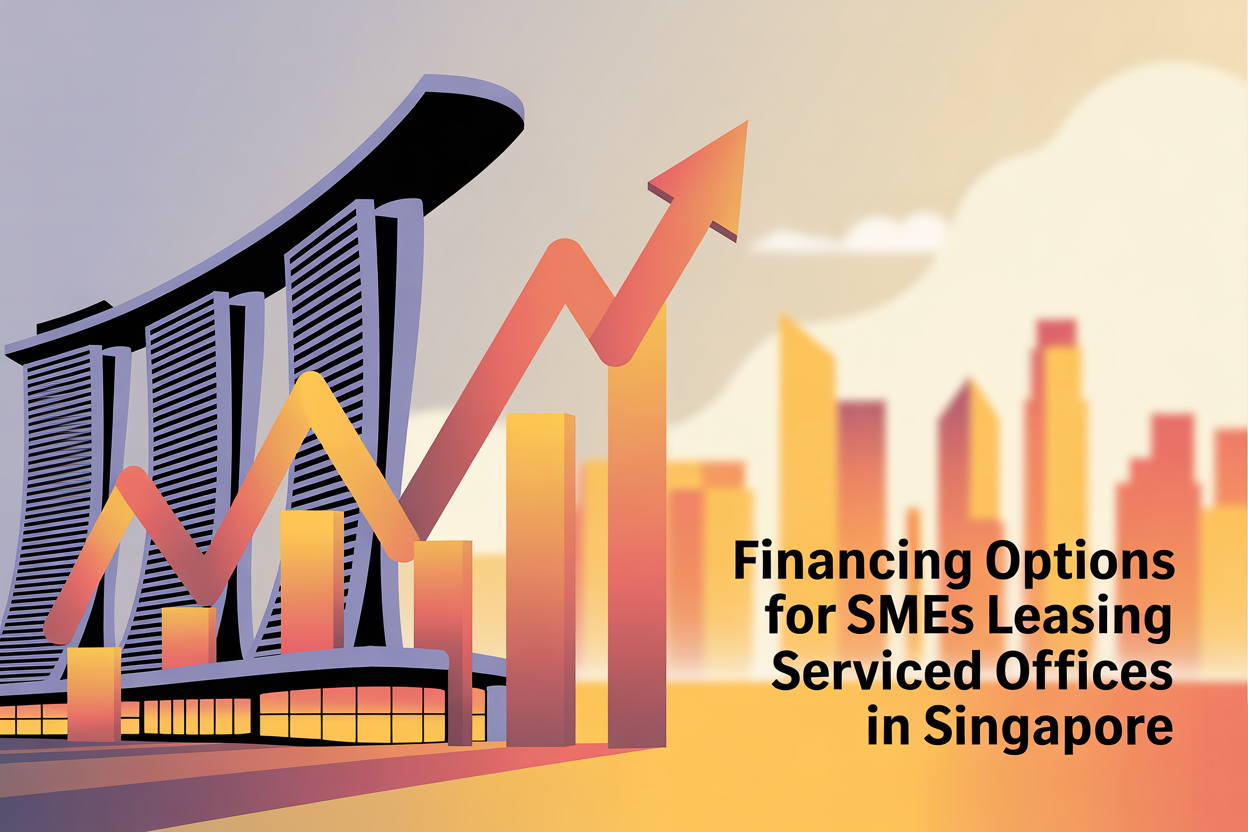Singapore’s economy relies heavily on small and medium-sized enterprises (SMEs), which account for around 99% of all businesses and contribute approximately 50% of the country’s GDP. According to the Department of Statistics, SMEs also employ over 70% of the workforce, making them a cornerstone of the nation’s economic health. According to the Singapore Department of Statistics, SMEs consistently play a key role in driving employment and GDP, underscoring their strategic importance.
Despite their critical role, many SMEs face difficulties accessing capital, especially when leasing serviced offices or managing early-stage expenses such as equipment, salaries, and rental deposits. Without the right funding, SMEs risk stagnating at critical growth stages. This article explores key challenges SMEs encounter and the financing solutions that can support their operations.
Key Financing Challenges for SMEs
1. Limited Creditworthiness
Many SMEs struggle to secure loans due to a lack of financial track record or insufficient collateral. Without solid credit histories or audited financials, banks and private lenders view these businesses as high-risk. This issue isn’t unique to Singapore but is prevalent worldwide, affecting SMEs across multiple sectors.
2. High Cost of Financing
Even if SMEs qualify for a loan, interest rates can be prohibitively high. Financial institutions often charge premium rates due to the perceived risk. These costs place a significant strain on cash flow and limit reinvestment opportunities.
Interestingly, this challenge mirrors the experience of foreigners investing in Singapore’s residential or commercial properties, who often face higher interest rates and stricter loan criteria due to the lack of a local credit footprint.
However, with careful comparison and due diligence, both SMEs and property investors can often find the best home loan rates in Singapore to suit their financial profiles. Working with mortgage advisors or loan brokers can further improve loan eligibility and reduce borrowing costs.
3. Lack of Awareness
Many SMEs are unaware of the financing programs available to them, from traditional banking products to government and alternative funding sources. This knowledge gap prevents businesses from leveraging resources that could help fuel growth or manage operating costs.
Financing Options for SMEs in Singapore
Fortunately, there are a number of financing routes available to SMEs, each with its own benefits and considerations. These include:
1. Traditional Bank Loans
These are often the first port of call. While banks have historically required stringent documentation and collateral, initiatives like the Enhanced SME Working Capital Loan have helped ease access to funding. Still, SMEs should be prepared with up-to-date financial statements, business plans, and projections.
2. Government-Backed Schemes
The Singapore government offers a variety of schemes to support SME financing:
- Enterprise Financing Scheme (EFS): Offers support across working capital, trade, and project financing needs.
- Temporary Bridging Loan Programme (TBLP): Introduced to provide short-term liquidity during periods of economic disruption.
- SME Working Capital Loan: Specifically designed to help smaller firms manage operational expenses.
These programs are often administered through partner financial institutions and may come with government risk-sharing, which improves loan approval rates for qualifying SMEs.
3. Alternative Financing Options
When banks aren’t an option, SMEs can turn to alternative funding methods:
- Invoice Financing: Turn unpaid invoices into cash by borrowing against accounts receivable.
- Peer-to-Peer (P2P) Lending: Platforms connect SMEs directly with investors or private lenders.
- Crowdfunding: Helps businesses raise funds by pitching their ideas to the public via online platforms. This is especially effective for startups with compelling products or community-driven goals.
According to Enterprise Singapore, over 20,000 SMEs have benefited from government-backed financing schemes since their introduction. Many report improvements in liquidity and the ability to maintain operations during uncertain periods.
Strategic Financing for Leasing Serviced Offices
For SMEs leasing serviced offices, financing is often needed not just for rental deposits but for renovation, furnishing, and office equipment. In this context, working capital loans or equipment financing options can be particularly helpful.
Additionally, some office space providers partner with banks or fintech lenders to offer preferential financing rates or installment plans. SMEs should inquire about such partnerships when evaluating lease agreements.
It’s also wise to assess the flexibility of lease terms—shorter commitments may reduce financial strain and allow for future upgrades as the business grows.
Tips for SMEs Seeking Financing
- Prepare documentation: Financial statements, business registration, income projections, and loan purposes.
- Compare options: Don’t accept the first loan offer. Shop around.
- Use loan calculators: Evaluate repayment schedules and understand your total cost of borrowing.
- Consider your timeline: Match your loan tenure with the intended use of funds.
- Work with experts: Mortgage brokers or SME consultants can help identify the most suitable financing route.
Final Thoughts
While SMEs are crucial to Singapore’s economic future, securing financing remains a hurdle for many. By understanding the available options—from government schemes to private loans and alternative methods—business owners can make informed decisions and maintain operational momentum.
Whether you’re leasing a new serviced office or planning a major equipment upgrade, tapping into the right financing channels is essential. With careful planning and the right partners, SMEs can overcome funding challenges and thrive in Singapore’s dynamic business environment.


